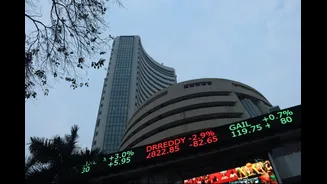HUL's Q2 Performance
Hindustan Unilever (HUL) revealed its financial results for the second quarter, demonstrating an ability to surpass predicted profit figures. This positive
outcome was achieved despite flat revenue, signaling that the company benefited from certain one-time gains. While specific details of these gains were not provided in the prompt, the announcement highlights the resilience of HUL's operational strategies in a challenging market environment. It's noteworthy that HUL managed to maintain profitability even in the face of stagnant revenue, implying effective cost management or successful strategic initiatives in other areas of the business. The report's focus is on the impact of these gains on the company's overall financial health during the reporting period. Although more information would be needed to fully understand the dynamics behind HUL’s financial success, this initial observation sets the stage for further economic analysis of the business sector.
World Bank's Growth Forecast
The World Bank has revised its growth projections for India's fiscal year 2026, setting the expectation at 6.5%. This updated forecast signals a positive outlook for the Indian economy's future trajectory, suggesting a continued expansion in economic activity and output. However, the World Bank also cautions about potential headwinds. The report specifically points out the possible negative impacts of US tariffs, which could affect trade relations and impede growth. Furthermore, the development and proliferation of artificial intelligence (AI) is mentioned as another disruptive factor, potentially altering economic structures. Such factors could introduce uncertainties into the economic forecast, making the realization of the projected growth rate contingent on the effective handling of these challenges. This cautious yet optimistic view reflects the complex nature of the current economic environment in South Asia and globally.
Sensex's Market Fluctuations
The stock market experienced a period of volatility, with the Sensex, a key market index, initially showing substantial gains. The index recorded an increase of 700 points before market dynamics triggered profit-taking, which subsequently wiped out the gains. This sudden shift in market sentiment is a clear indication of the dynamic nature of stock trading, where short-term gains are frequently followed by corrections. Profit-taking behavior is a typical reaction by investors seeking to secure their recent gains, which can exert downward pressure on the index. The episode demonstrates the sensitivity of the Sensex to changing economic conditions, investor sentiment, and global market signals. This underscores the need for continuous monitoring and a nuanced understanding of market drivers to interpret trends accurately and devise informed investment strategies.
















